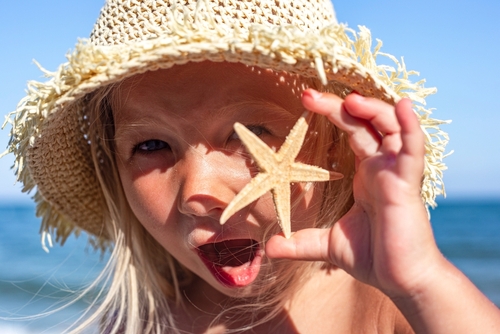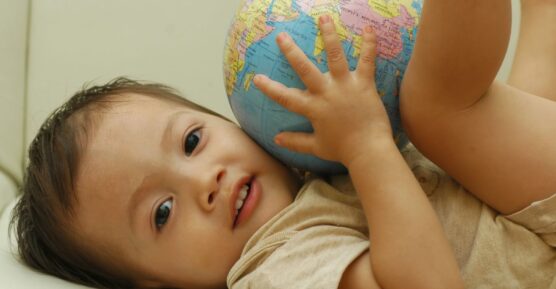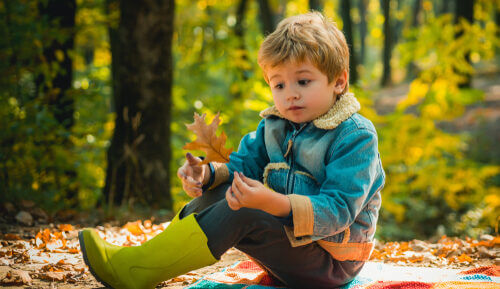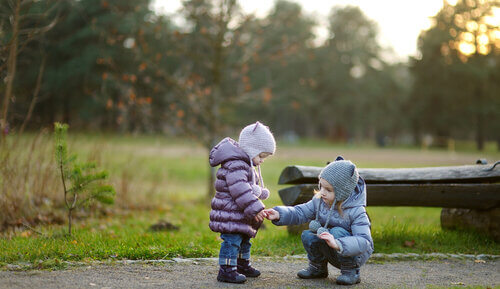
Beach school at Woodland House Nursery. Credit: Woodland House Nursery
Table of contents
Table of contents
What are the benefits of beach school? With the support of qualified staff, children can explore the natural landscape safely and experience beach school activities. Young children can let their imagination and curiosity run free as they engage in child-led play as well as taking part in group activities. The beach school benefits are highlighted in this article.
What is a beach school?
Beach school activities are similar to those of a Forest school because they both offer children an outdoor learning experience in the natural world. In the case of beach school, early years learning takes place at the seaside.
What does a day at a beach school look like?
A group of children supervised by staff head to the beach to try a variety of activities. No two days are the same as children are encouraged to lead the way in their own learning to get the benefits of beach school. Meals are either in an indoor setting or enjoyed as a picnic on the beach.
What are the benefits of a beach school?
- When it comes to beach school benefits, children can get a ‘holistic experience’ which nurtures their physical, social, emotional and spiritual development.
- The hands-on learning approach offered at a beach school allows children to develop skills that may be difficult to teach in the classroom.
- Not all children get the chance to take family trips to the beach. They may never have seen the sea. They may not have been exposed to a seaside experience with children their age.
- For children that may find a classroom environment difficult, a beach school gives children the chance to be active outside in the fresh air, while learning about the natural world. A child’s health and wellbeing can be boosted. Beach school benefits include physical exercise. Children get the chance to test their limits and take risks in the natural world.
- This can build a child’s confidence, independence, resilience, understanding, empathy, physical abilities, communication and social skills.
Cassie Holland, co-founder of Bristol Beach Schools, which operates both Woodlands House Nursery and Archfield House Nursery said: “When adults are asked to close their eyes and recall their first memory playing as a child. “These are invariably of experiences located in the outdoors, perhaps on a beach or in the garden at home.
“For children, the beach provides experiences that no other place can. It offers endless opportunities for discovery, whole-body movement, social interactions, risk and challenge.”
She says children at the beach are “at a point where they are at their highest potential to learn and develop”. The beach “also allows children to express themselves in any way they wish; from making small marks in the sand to running as fast as possible to get the wind in their hair.
“It is wonderful to capture the moment a child first finds a crab in a rock pool or falls in the squirmy mud for the first time.”
What do children learn at a beach school?
You may wonder what can children learn from a beach that they may not learn in a classroom?
Beach schools offer lots of opportunities for children in their early years which can be aligned to the government’s Early Years Foundation Stage (EYFS) framework for children aged from birth to five-years-old in England.
Learning through play, as highlighted by England’s EYFS framework, can take place at a beach just like it does in a conventional early years setting.
The seven areas of learning and development, as outlined by EYFS, can shape a child’s development at a beach school.
The seven areas are:
- Understanding the world
- Communication and language
- Literacy
- Mathematics
- Physical development
- Personal, social and emotional development
- Expressive arts and design
Early years curriculums in Scotland, Wales and Northern Ireland are similarly centred around learning through play.
What beach school activities can children do?
A beach school can follow a similar structure to other outdoor sessions like Forest Schools but the ever-changing landscape of a beach can fuel a child’s curiosity and imagination with lots of beach school activities. The seven areas of learning and development (as outlined by EYFS) can be incorporated into beach school activities.
Understanding the world
To help children make sense of their physical world, children can increase their experiences of the natural world by spending time in a coastal landscape. They can learn to appreciate the waves, sand, and interact with natural objects like driftwood to help them learn.
Exploring sensory experiences
Children can sit together in a circle and can be asked questions by early years staff. A child will be encouraged to use their senses, e.g what can you hear, see, smell? Children could be asked to listen out for a particular natural sound such as the sound of a wave or look for an object such as a sea shell. This can be lots of fun with sensory experiences incorporated such as feeling the wet sand between toes.

Credit: Shutterstock
Children can learn about the world through their senses, with activities such as:
- Looking for shells, driftwood, pebbles, seaweed and wildlife such as crabs in rock pools etc.
- Reaching out and touching natural materials to learn new skills such as building things with driftwood, digging in the sand, using rope to tie knots.
- Listening to the sound of the waves against the shore, the wind blowing and coastal wildlife such as the cry of seagulls.
- Smelling the fresh, salty sea air, which can widen a young child’s understanding of a marine environment.
- Delicious beachside treats found naturally by the sea and around the world can be brought to the attention of children e.g. coconuts can be given to children to taste and drink.
Communication and language
Children become motivated to develop their language with others by engaging with other children and staff in fun activities.
By coming into contact with the coast and natural objects found on the beach, children can expand their vocabulary and comprehension.
This can include:
- Talking about what they see, hear, touch etc at the beach and how it makes them feel.
- Listening and taking part in storytelling.
- Treasure hunts to forage for natural resources such as shells.
Literacy
A child’s literacy can be improved by beach school activities such as:
- Mark making in the sand with their fingers/sticks/pebbles, to form shapes, patterns and lines. This is the basis of how young children can develop their writing skills.
- Making letters using natural objects found on the beach such as sticks.
Mathematics
Activities at the beach are largely child-led and the beach can also help staff develop a child’s understanding of maths in this natural landscape.
According to the EYFS ‘children should be able to count confidently, develop a deep understanding of the numbers to 10, the relationships between them and the patterns within those numbers’.
It recommends early years providers offer ‘frequent and varied’ opportunities to grow children’s understanding of mathematics.
Activities on the beach could include:
- Using small pebbles and sticks to count.
- Playing with different-shaped objects.
- Making numbers out of natural objects found on the beach.
Physical development
Beach School activities help to improve children’s physical fitness and overall health and well-being.
Away from tablets, computer screens and TVs at home, the beach can help children develop physically. This includes building their gross and fine motor skills, developing their balance, stability, strength, agility, spatial awareness etc.
Spending time outdoors also leads to better eye health as it reduces short-sightedness in children.
The NHS recommends toddlers and pre-school aged children spend at least three hours doing physical activity each day.
Physical activities can include:
- Using spades and buckets to dig in the sand.
- Jumping and splashing in rockpools.
- Running down sand dunes.
- Playing physical games like ball games.
Personal, social and emotional development
Children’s personal, social and emotional development (PSED) is crucial for children to help them lead healthy and happy lives. It is key to their cognitive development.
Time at the beach is an opportunity to let children have fun and relax in the natural world.
Just being in nature can boost a person’s mood, health and wellbeing.
Beach schools help children have lots of fun. They also help children learn new skills, test their limits, and grow in confidence and self-esteem, which also boosts their wellbeing.
Children can teach themselves to problem solve and as a result they can learn to be self-sufficient through trial and error.
Social Skills
Children can gain a greater understanding and awareness of the needs of others during activities on the beach. When it comes to the benefits of beach school, their experiences can help them form attachments with other children.
Children can learn about sharing, being kind to each other and being polite (with support from early years practitioners).
Young kids can also learn to resolve conflicts peacefully and can learn from other children’s reactions and experiences on the beach.
Children can sharpen their social skills with activities such as:
- Group games like ball playing, which develops their ability to interact with others.
- Singing songs together with seaside themes.
Risky play
Children can learn to take risks and understand how to manage them safely under supervision. Managed risk-taking on the beach can build children’s confidence and independence. It can also motivate them to learn.
Risky play can also help develop a child’s physical, emotional and social skills.
When it comes to risky play, children are supervised at all times. For example, a staff member could be a qualified forest school practitioner experienced in teaching children to use tools such as secateurs.
Risky play activities can include:
- Balancing on driftwood.
- Splashing feet in the sea water.
- Using natural resources to make a fire.
- Using tools such as scissors, loppers, mallets, tent pegs, peelers and secateurs.
Expressive arts and design
Children can let their imagination run wild in an exciting new landscape. Beaches can fire up children’s curiosity, inventive skills and creative minds in a variety of ways.
Expressive arts and design activities initiated by a child can include:
- Making handprints, shapes and sculptures like castles in the sand.
- Collecting driftwood and shells to create works of art.
What does a Beach school risk assessment involve?
Beach school staff can make a risk assessment before beach sessions start.
Staff should talk to children about boundaries, reminding them the area where they will be based and the areas that they should not go beyond.
Staff will consider factors such as:
- Are the cliffs above the beach safe?
- Are there slippery or sharp rocks?
- Are there strong rip tides?
- Is there a lot of rubbish on the beach?
- Is sewage flushed in or out of beach?
- Are there dogs running free and lots of dog mess?
- Is there easy access to a road in case of emergency?
How do you become a beach school leader?
There are a variety of courses across the UK that can train people to become a Level 3 Qualified Beach School Practitioner.
Lead practitioners must gain a Beach School qualification that covers the sustainable management of marine beach ecosystems.
You can train as a Forest School leader (Forest School Level 2/3 or equivalent) and take a Level 3 Certificate in Coastal School Leadership (QCF), which is nationally recognised training for Beach School leaders.
Course subjects can include:
- Understanding marine ecosystems.
- Understanding tides and weather.
- Beach shelter building techniques.
- Fires and campfire cooking.
- Water safety and rescue training.
- Beach risk assessments.
Little Footsteps Day Nursery & Preschool runs a forest school and a beach school. Within walking distance of the nursery is Scarborough’s north bay.
Little Footsteps Day Nursery’s beach school policy states: ‘Every area of the Early Years Foundation Stage framework (EYFS) is covered on outings such as our forest and beach school adventures.
‘Children are able to make choices, discoveries and initiate learning for themselves. This is a valuable way of learning. Staff will know when to step back and observe – shadowing supportively.
‘A great emphasis is placed on the emotional well-being of the children with mutual respect, security and self-confidence encouraged at all times. It allows all learning styles to be catered for, encourages self-esteem and allows for self-regulation.
‘Activities usually involve group work so socialisation and empathy develop naturally and communication skills improve. Children’s experiences are fun and productive so they remain engaged for longer, and consequently learn more effectively.’


